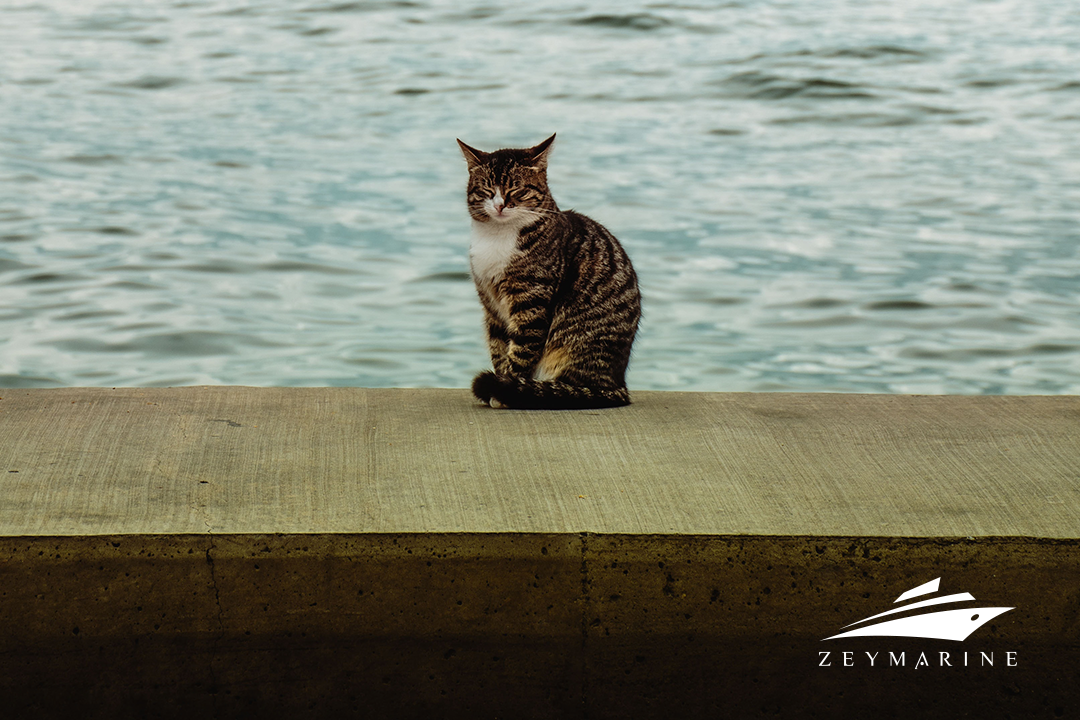When Bismarck sank following a devastating naval battle on May 27, 1941, only a small group of the crew could survive the engagement. Months later, another ship called HMS Cossack was severely damaged by a torpedo fired by the German submarine U-563 when she was escorting a convoy from Gibraltar to Great Britain. Her destiny was the same. HMS Cossack sank eventually and most of the crew lost their souls. The living and able-to-fight ones transferred to HMS Ark Royal. However, the unceasing inflow of water forced attempts to tow Ark Royal to Gibraltar impossible. About 30 miles from Gibraltar, the ship rolled over and sank. All but one of the crew were rescued owing to the ship’s modest pace of sinking.
On every three ships, there was a weird guy who spends his time mostly on personal hygiene and sleep. He was fury as well as a bit furry. You probably guessed right, he was a cat and his name was The Unsinkable Sam. A great hero of the Second World War and the ship’s cat of three ill-fated warships. But he was not one of a kind. He was an example of the aged-long tradition of felines onboard.
History of Ship’s Cat
Our four-foot friends have been with us for such a long time. Today, especially for cat owners – or maybe cat parents – undoubtedly agree that they are our cutest and most enjoyable companions.
The first agricultural revolution, which began approximately 10,000 years ago, is likely when the African wildcat was first domesticated.
Ancient Egyptian cats began migrating over Mediterranean trade routes in the eighth century BCE, and by the seventh century, they reached a Viking port near the Baltic Sea, according to the analysis of the mitochondrial DNA of archaeological cat specimens. Some studies showed that Viking seafarers even took cats on their journeys. Explorers and traders transported cats on board their ships to a large portion of the rest of the world during the Age of Discovery, which spanned from the 15th to the 18th centuries.
Since ancient times, the ship’s cat has been an inseparable crew on many commerce, explorer, and military ships. The main reason cats have been transported on ships is to control rodents. Ropes, woodwork, and more recently electrical equipment, can all be harmed by vermin and rodents on a ship. Additionally, rodents pose a hazard to ships’ storage, eat the food provided to the crew, and have the potential to harm grain cargo’s value. In addition, rodents can spread diseases, which is risky for ships that are at sea for extended periods of time. Rats on ships were thought to be the main vector of the Black Death because rats carry rat fleas, which seem to be plague carriers.
Cats also naturally have a sensitivity to changes in atmospheric pressure. So, if you get to know the habits of an onboard cat well, you can recognize when it starts taking an unusual liking to the shelter.
Superstitions about Cats Onboard
Cats have a long history of being deemed mystical and occasionally revered as deities; as a result, numerous myths and superstitions developed among the notoriously superstitious maritime population. Cats were thought to possess supernatural abilities that could shield ships from hazardous weather. Sometimes, drollingly, wives of fishermen would also keep black cats at home in the hopes that they could use their power to keep their husbands safe at sea.
If a cat came halfway to a sailor on the deck, it was deemed lucky; but it was deemed unlucky if it only came halfway before retreating. Another widespread belief stated that the magic in cats’ tails could trigger storms. It was considered that if a ship’s cat fell or was thrown overboard, it would call forth a tremendous storm that would sink the ship, and if the ship managed to survive, it would be cursed with nine years of bad luck.
Some of these ideas have some truth to cats. Due to their extremely sensitive inner ears, which also allow them to land upright when they fall, cats can recognize minor changes in the weather. Cats are generally anxious and restless when there is low air pressure, which is a typical signal of adverse weather. Cats instinctively respond to variations in barometric pressure, which allows a keen observer to see bizarre behavior and anticipate an oncoming storm.
Some of the Famous Ship’s Cat
Apart from The Unsinkable Sam, there are plenty of famous felines onboard who are often honored with their contribution.
On many aircraft carriers used by the Royal Navy, Tiddles served as a ship’s cat. He enjoyed toying with the bell rope while on the aft capstan. During his tenure in service, he covered more than 30,000 miles.
On HMS Prince of Wales, where Prime Minister Winston Churchill traveled in 1941 to secretly meet with US President Roosevelt to publicly declare the Atlantic Charter, Blackie was the one who could hear all about it in the room. Famous photos of Churchill and Blackie’s encounter led to the cat’s later renaming as Churchill in recognition of the visit.
Trim was the ship’s cat on several ships commanded by Matthew Flinders, who led the second circumnavigation of Australia and recognized it as a continent. After the cat passed away, Flinders continued to write about him because he was so enamored with him; Trim is remembered by statues and plaques throughout all Australia.









